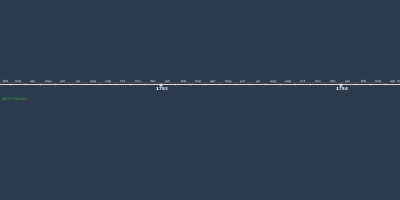1 ene 1875 año - Reciprocity Treaty of 1875
Descripción:
AKA: Treaty of reciprocity between the United States of America and the Hawaiian Kingdom (Hawaiian: Kuʻikahi Pānaʻi Like)A free trade agreement signed and ratified in 1875 that is generally known as the Reciprocity Treaty of 1875.
The treaty gave free access to the United States market for sugar and other products grown in the Kingdom of Hawaii starting in September 1876. In return, the US gained lands in the area known as Puʻu Loa for what became known as the Pearl Harbor naval base. The treaty led to large investments by Americans in sugarcane plantations in Hawaii.
For decades, the sugar planters in Hawaii had been economically hampered by United States import taxes placed upon their product, and consequently had been attempting negotiations for a free trade agreement. Two previous efforts at reaching an agreement with the United States failed, for many reasons. The planters wanted a treaty, but Hawaiians feared it would lead to annexation by the United States. Sugar refineries in San Francisco lobbied for a clause protecting their interests. The most recent effort before Kalākaua's reign died in the United States Senate.
Within a year of Kalākaua's election, the treaty would become a reality, although the treaty was not supported by all Hawaiians. There were concerns over American ambitions to annex the islands, with many in the business community willing to cede the exclusive use of Pearl Harbor to the United States in exchange for the treaty. Part of Kalākaua's election platform, as "Hawaii for Hawaiians", had been to oppose the ceding of any sovereign land. Hawaii legislator Joseph Nāwahī predicted the treaty would be "a nation snatching treaty".
The most immediate result of the treaty was the boom in new sugar plantations. San Francisco sugar refiner Claus Spreckels became a major investor in Hawaii's sugar industry, initially buying half of the first year's production, and ultimately being the major shareholder in the plantations. Claus and his son John D. Spreckels became part owners of the Waihee plantation on the island of Maui. Within 5 years, it was estimated that he owned one-third of the sugar production in Hawaii. By 1882, the year he exported 24 million tons of raw sugar from the islands, he claimed to have a monopoly on the Hawaiian sugar production. Spreckels became one of Kalākaua's close associates, and by extension, tied in with the king's cabinet minister Walter Murray Gibson.
Over the term of Kalākaua's reign, the treaty had a major effect on the kingdom's income. In 1874, Hawaii exported $1,839,620.27 in products. The value of exported products for 1890, the last full year of his reign, was $13,282,729.48, an increase of 722%. The exportation of sugar during that time period went from 24,566,611 pounds to 330,822,879 pounds.
Añadido al timeline:
fecha:
1 ene 1875 año
Ahora mismo
~ 150 years ago
